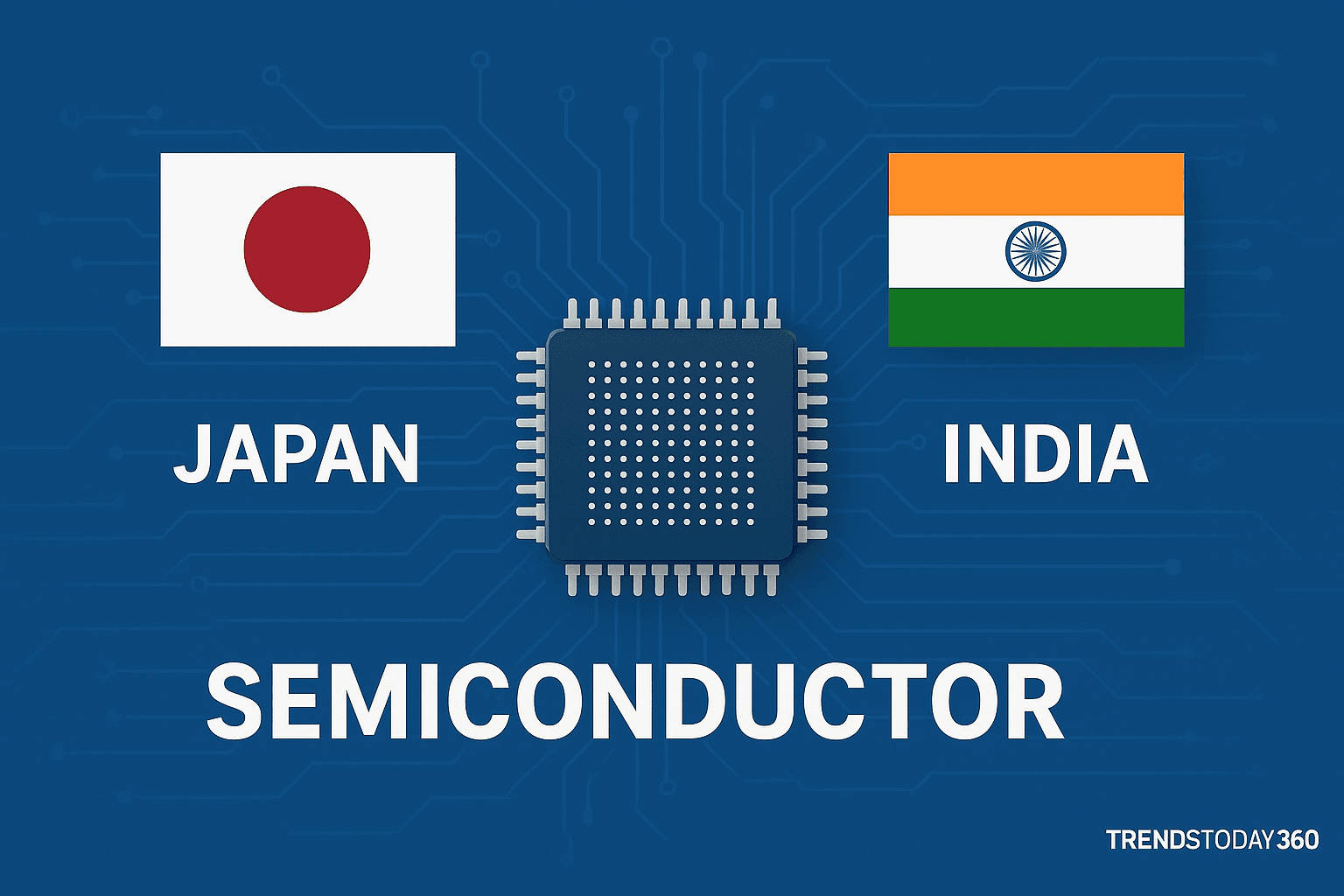The world is moving at lightning speed when it comes to technology, and 2025 is proving to be a defining year. One of the most impactful developments this year is the India–Japan Tech Partnership, a strategic collaboration that goes beyond simple trade relations. This partnership is not just about economics—it’s about creating a technological roadmap for the future. With global supply chains under stress, AI shaping industries, and semiconductors becoming the new “oil” of the digital age, the India–Japan partnership has captured attention worldwide.
Why the India–Japan Tech Partnership Matters
India and Japan are not new friends. Their partnership has always been rooted in mutual respect, strong diplomacy, and economic collaboration. But in 2025, things are different. The global race for AI dominance, the semiconductor shortage, and the need for secure tech ecosystems have pushed both countries to rethink how they can leverage each other’s strengths.
- India’s strengths: A large digital population, skilled IT workforce, AI research ecosystem, and growing demand for electronics.
- Japan’s strengths: Cutting-edge hardware, robotics, semiconductor manufacturing expertise, and innovation-driven R&D culture.
By joining hands, the two nations aim to strengthen not just their own economies but also offer an alternative tech ecosystem to balance global power dynamics dominated by the U.S. and China.
Key Areas of Collaboration
The partnership outlines 21 agreements covering various aspects of technology and innovation. Let’s break down the most crucial areas:
1. Artificial Intelligence (AI) Cooperation
AI is at the heart of this partnership. Japan brings precision engineering and robotics expertise, while India contributes with scalable AI talent and real-world applications. Together, they aim to:
- Develop AI for healthcare, focusing on predictive diagnosis and smart treatment plans.
- Build AI-driven smart city solutions for traffic, energy efficiency, and governance.
- Collaborate on ethical AI policies that ensure transparency and data privacy.
This collaboration could position both nations as leaders in responsible AI development.
2. Semiconductor Manufacturing
Semiconductors are the backbone of every digital device. With the ongoing global shortage, securing chip supply has become a national priority for every major economy. India and Japan are planning:
- Semiconductor fabs in India, with Japan bringing technology and process expertise.
- Joint R&D in chip design, aiming to create next-gen processors for AI and IoT devices.
- Supply chain resilience strategies to reduce dependence on single regions.
This move could transform India into a global hub for chip manufacturing, while giving Japan a reliable partner to diversify its production base.
3. 5G, 6G, and Connectivity
India’s fast-growing 5G rollout and Japan’s advanced research into 6G networks are being aligned. The partnership includes:
- Collaborative research for 6G standards to shape global telecom rules.
- Deployment of secure, open 5G ecosystems in India with Japanese firms’ support.
- Future-focused connectivity for IoT, autonomous vehicles, and smart factories.
This will accelerate both countries’ positions in the global race for next-gen internet infrastructure.
4. Startups and Innovation Ecosystem
Both countries are creating platforms for startups to co-develop products and scale internationally. India’s young entrepreneurs and Japan’s innovation-driven industries can join forces to:
- Build joint AI startups in fintech, healthtech, and agritech.
- Share innovation grants and venture funding.
- Strengthen incubators and accelerators across Tokyo, Bengaluru, and Hyderabad.
This ecosystem is expected to attract global investors looking for sustainable tech opportunities.
Social and Economic Impact
The India–Japan Tech Partnership isn’t just about businesses—it’s about people. Here’s how it impacts society:
- Jobs and Skills: The semiconductor industry alone could create thousands of high-paying jobs in India. AI collaborations will also require a skilled workforce, pushing both nations to invest in education and upskilling.
- Affordable Technology: With stronger supply chains, gadgets and digital services could become more affordable for everyday consumers in India.
- Global Recognition: For India, this partnership is a step toward becoming a global tech powerhouse, while Japan strengthens its role as a leader in ethical innovation.
- Cultural Exchange: Beyond economics, the collaboration fosters deeper ties between Indian and Japanese professionals, encouraging cultural and academic exchanges.
Challenges Ahead
No major partnership is free of challenges. The India–Japan tech alliance must overcome:
- Execution hurdles: Setting up semiconductor fabs is capital- and time-intensive.
- Policy alignment: Harmonizing data privacy laws and AI ethics frameworks.
- Geopolitical pressures: Balancing relations with the U.S., China, and EU while maintaining an independent strategy.
Yet, both governments appear committed, which increases the chances of long-term success.
Global Context – Why This Partnership Stands Out
Many countries are racing to secure their digital future. What makes India–Japan unique is the complementary nature of their strengths:
- Unlike U.S.–China competition, this partnership focuses on collaboration rather than rivalry.
- It offers diversification of supply chains, reducing over-dependence on any single country.
- It sets a model of democratic tech cooperation, where innovation is tied to transparency and human values.
This could inspire similar collaborations in Asia, Africa, and Europe.
Social Review: How People See This Partnership
On social media and tech forums, the India–Japan Tech Partnership is being hailed as a “win-win deal.” Here’s the sent
Final Thoughts
The India–Japan Tech Partnership 2025 is more than just a bilateral agreement. It’s a blueprint for the future of technology, one that emphasizes collaboration, ethical innovation, and global resilience. By combining India’s software talent and digital market with Japan’s hardware expertise and innovation culture, the two nations are setting the stage for a powerful, future-ready alliance.
If executed successfully, this partnership could redefine not only the tech landscape of Asia but also the global balance of innovation.
UpdatedBy Trendtoday360







Leave a Reply